Discover Sensible Medicine
Sensible Medicine

 Sensible Medicine
Sensible Medicine
Author: Sensible Medicine Authors and Editors
Subscribed: 184Played: 5,455Subscribe
Share
© Editors
Description
Common sense and original thinking in bio-medicine
A platform for diverse views and debate
www.sensible-med.com
A platform for diverse views and debate
www.sensible-med.com
108 Episodes
Reverse
Two papers this week, with a bunch of articles that we referenced in the conversation. Also, the last Fortnight podcast was accidentally posted behind a paywall. It is now up and free to listen to. My apologies.Sensible Medicine is reader-supported. If you appreciate our work, consider becoming a free or paid subscriber.Folinic acid improves verbal communication in children with autism and language impairment: a randomized double-blind placebo-controlled trial* Folate Receptor Alpha Autoantibodies in Autism Spectrum Disorders: Diagnosis, Treatment and Prevention* Association Between Maternal Use of Folic Acid Supplements and Risk of Autism Spectrum Disorders in Children* Cerebral folate receptor autoantibodies in autism spectrum disorder* What Is Leucovorin, the Medicine Being Approved for Autism Treatment?* Clinicaltrial.gov searchEffects of Glucagon-Like Peptide 1 Receptor Agonist Initiation in Patients With Heart Failure With Reduced Ejection Fraction and Implantable Cardiac Devices* Semaglutide and Cardiovascular Outcomes in Obesity without Diabetes* Effects of Once-Weekly Exenatide on Cardiovascular Outcomes in Type 2 Diabetes* Effects of Liraglutide on Clinical Stability Among Patients With Advanced Heart Failure and Reduced Ejection Fraction* Increased Risk of Heart Failure Hospitalization With GLP-1 Receptor Agonists in Patients With Reduced Ejection Fraction: A Meta-Analysis of the EXSCEL and FIGHT Trials This is a public episode. If you'd like to discuss this with other subscribers or get access to bonus episodes, visit www.sensible-med.com/subscribe
We go all observational this week. A look at data suggesting the safety of GLP-1s and a re-examination of data on patient/doctor race concordance/discordance (a topic Adam said we should not study, and then John forces him to).GLP-1 Receptor Agonists and Cancer Risk in Adults With ObesityPhysician–patient racial concordance and newborn mortalityOriginal, 2020 article: Physician–patient racial concordance and disparities in birthing mortality for newborns This is a public episode. If you'd like to discuss this with other subscribers or get access to bonus episodes, visit www.sensible-med.com/subscribe
NT is a 55-year-old man admitted to the general medicine service with cellulitis of his left leg. When the attending sees him the morning after admission, he notices the patient’s “Medical Center Trustee” hospital ID on his bedside table. After gathering a history and examining the leg, the attending leaves the room. In the hallway, he crosses paths with the hospital president, who is there to make a “social call”. She smiles and says to the attending, “Don’t let anything bad happen.”Sensible Medicine is reader-supported. If you appreciate our work, consider becoming a free or paid subscriber.Every clinician is familiar with the Very Important Patient, the VIP. Defining the VIP is challenging. In the most general sense, the VIP is a patient whose care imposes an additional burden on the clinician. The VIP is perceived to have an elevated social status, typically due to fame, wealth, connections, or power.The VIP may come to his or her status in several ways. The VIP might claim that status herself. The status might be granted by a third party, such as the source of the referral, or outside realities (fame, fortune, power). Sometimes, VIP status is granted by the physician alone.The physician recognizes that an untoward outcome in the care of the VIP — clinical or otherwise, expected or unexpected — will be acknowledged by a wider community and might be particularly unpleasant for the treating physician.VIP patients are a threat to healthcare. They need to be eradicated from hospitals and clinics as ruthlessly as we would eradicate E. coli from a well, Pseudomonas from a hot tub, or Legionella from a hotel HVAC system.Why should we eliminate the VIP? Because a patient’s wealth, station, or connections should have no bearing on the tests that are done, the treatments that are offered, or the haste with which care is provided.I have heard people argue about whether basic healthcare is a human right. I have heard people who agree that basic healthcare is a human right argue about what makes up basic healthcare and who should decide what qualifies. I have never heard people argue about whether people deserve different care based on their identity.The most obvious threat the VIP poses is to himself. We recognize that when people are treated as special, they are at risk of getting worse healthcare. This fact underlies the guidance that physicians avoid caring for close friends and relatives. The AMA Code of Medical Ethics states:When the patient is an immediate family member, the physician’s personal feelings may unduly influence his or her professional medical judgment. Or the physician may fail to probe sensitive areas when taking the medical history or to perform intimate parts of the physical examination. Physicians may feel obligated to provide care for family members despite feeling uncomfortable doing so. They may also be inclined to treat problems that are beyond their expertise or training.You could easily replace family member with VIP. While we can all avoid treating family members and close friends, VIPs are a reality in every physician’s life. Transferring their care to another physician usually does not change the circumstances.Ben Kean, an exceptionally colorful character and my parasitology teacher in medical school, shared a story about the risks VIP healthcare poses to the VIP. He once suggested that a patient with pneumonia — a patient who was also famous, wealthy, and important — be transferred from a private hospital to a public one, and treated under a pseudonym."But why a public hospital, when I have a good private clinic here with the best doctors and nurses?""There are two ingredients essential to your recovery," I explained, "that can't be found here and that you cannot buy. These are things found only at a large public institution, where hundreds of patients are seen each day, many of whom suffer from pneumonia. First, you need a large house staff -- bright, young people with new ideas and with daily experience in dealing with desperate situations. Second, you need a laboratory with specialized technicians available around the clock to monitor your breathing, to do special culture work for bacteria and parasites. This is a lovely private hospital, but the kind of help you need isn't available here."Then there is the reality that if you treat VIPs differently, and it becomes known, it is a bad look. Just ask the leadership of NYU Langone Health.But the threat of the VIP goes beyond personal risk. The overtesting, overtreatment, and early diagnosis that have been described not only threaten the VIP but are also bad for our healthcare system. Overspending and excess erode other people’s care. An unnecessary MRI ordered for the VIP’s week of sciatica may delay the diagnosis of cord compression in the non-VIP with back pain and prostate cancer.VIP treatment can lead to ill will among members of the healthcare team. Teams bond when they work together for the benefit of a patient. With VIPs, team members most under the patient’s sway may suggest management at odds with that proposed by team members less influenced by the patient’s status. It is not hard to imagine moral injury if a healthcare worker perceives they are acting because of who a patient is rather than because of what the patient needs.If a team bows to pressure, the ethics of medicine are compromised. Other patients will perceive a tiered system, and this will undermine their faith in medicine.Eradicating the VIP from healthcare is certainly more difficult than getting rid of E. coli, Pseudomonas, or Legionella. How do we ensure that the homeless man, with no wealth, power, or family, receives the same care as the woman for whom the hospital is named?It may be hard to eradicate the VIP when healthcare itself has played a significant role in creating the VIP. Hospital marketing and rankings promote the idea that doctors and hospitals are not equal. They do this to attract the “best payer mix” so they can build shiny new facilities. If patients, with their expensive, private insurance, are drawn to a medical center because of the rankings, should we be surprised if they expect something for their money and effort?I wish there were an easy answer. There is not. It is possible that Mick and Keith are our best guides here.As clinicians, we know that we need to provide the best care possible for our patients. We also recognize that different people want different things from their healthcare. Some people just want to be left alone at night, others want an extra cup of tea with breakfast, and others want a visit from the hospital president. If these allowances truly do not affect the care of patients, all patients, then there is no harm in providing the desired care in addition to the necessary care. Once management of the VIP threatens to affect care, hers or that of her fellow patients, then physicians need to recommit to their pledge to care for everyone equally, regardless of who they are. This is at the core of the practice of medicine. This is a public episode. If you'd like to discuss this with other subscribers or get access to bonus episodes, visit www.sensible-med.com/subscribe
This is a public episode. If you'd like to discuss this with other subscribers or get access to bonus episodes, visit www.sensible-med.com/subscribe
Last week, John was at the European Society of Cardiology conference in Madrid, and Adam was at the Preventing Overdiagnosis 2025 International Conference in Oxford. A conversation about what we learned.Digitoxin in Patients with Heart Failure and Reduced Ejection FractionBeta-Blockers Post-MI: A Clear Clinical MessageAspirin in Patients with Chronic Coronary Syndrome Receiving Oral AnticoagulationHow does decontextualised risk information affect clinicians’ understanding of risk and uncertainty in primary care diagnosis? A qualitative study of clinical vignettesHow do we talk about overdiagnosis of mental health conditions without dismissing people’s suffering? This is a public episode. If you'd like to discuss this with other subscribers or get access to bonus episodes, visit www.sensible-med.com/subscribe
Metformin for Treatment of Knee Osteoarthritis in Patients With Overweight or ObesityOnce-Weekly Semaglutide in Persons with Obesity and Knee OsteoarthritisSemaglutide or Tirzepatide and Optic Nerve and Visual Pathway Disorders in Type 2 Diabetes This is a public episode. If you'd like to discuss this with other subscribers or get access to bonus episodes, visit www.sensible-med.com/subscribe
TR is a 72-year-old woman, a retired executive, who had been in excellent health until she began experiencing exertional dyspnea and palpitations. After waiting out the symptoms for about a month, she called and made an appointment to see her primary care doctor. The day before her appointment, she awoke unable to move her entire right side. With difficulty, she reached for her phone and called her daughter. Her daughter was unable to understand her and called 911.This Substack is reader-supported. If you appreciate our work, consider becoming a free or paid subscriber.Someday, I will close up my practice and be left with an enormous hole in my life. I will miss the 12-24 people I get to spend time with every day during their appointments. I will miss the sometimes-intense relationships with a fantastic diversity of people. I will miss working to make people’s lives better and longer. I will miss the diagnostic puzzles and the reward of seeing someone “get better” over days, or weeks, or months.I will also miss my colleagues, the clinicians who have chosen to dedicate their careers to helping people. I will miss meeting the next generation of doctors, nurses, psychologists, physical therapists, pharmacists, and the like.I will not miss The Look.I was well into my career when I first recognized The Look. I had just returned to our inpatient service after a leave to care for my mother, who had experienced a serious, life-altering illness.A few days after my return, my team admitted TR. She had been in excellent health until a few months before admission, when she began to lose weight and have some trouble sleeping. More recently, the symptoms had progressed to include exertional dyspnea and palpitations. Our evaluation revealed hyperthyroidism from a toxic multinodular goiter, leading to atrial fibrillation, leading to a large, embolic, left middle cerebral artery stroke.From a medical perspective, the case was classic and straightforward. My resident assigned TR to a medical student as she thought it was a perfect teaching case.On the second day of TR’s admission, I met her daughter and learned more about TR. She had grown up on Chicago’s South Side and had always been a star student. She excelled in the public school system and was eventually awarded a full scholarship to the University of Illinois. When she left for Urbana-Champaign, it marked the first time she had left Chicago.She graduated summa cum laude from U of I and began working in a corporate office back in Chicago. She excelled in this world as well, eventually managing a fifty-person team.She had one daughter, whom she adored, and two grandchildren. She retired just before her 70th birthday. She was thriving in retirement, traveling alone and with friends, and serving on two corporate boards. She loved her work on boards because it enabled her to meet a small group of African American women executives of her generation who shared similar experiences.The Look on her daughter’s face was familiar to me. I recognized it because I knew I had worn it a few weeks before, caring for my mother. The Look reflected the emotions TR’s daughter articulated to (and for) me. There was sadness and anger for what her mother had lost. There was anxiety about what was next for her mother. There was a realization that her mother’s situation would affect her. Their relationship had permanently changed. TR’s daughter spoke of how her mom had always been her foundation. Overnight, the daughter had become the middle of the sandwich. She now had to care for her kids and her mother. There was also a little bit of guilt. How can I worry about the impact this will have on my life when my mother is now disabled?Seeing The Look that I knew we shared, the empathy I felt for TR’s daughter made it difficult for me to play my usual role in counseling and planning. I told my resident and the case manager they would have to “do this one without me.”Since that day ten years ago, I recognize The Look not infrequently. I see it on the children who suddenly lose a parent, while gaining responsibility for that parent. I also see it on the faces of husbands and wives when their partners begin to fail. In these situations, my relationship tends to be different. While the adult child is, more often than not, a stranger to me, both members of the couple are often my patients. While I care for one partner with cognitive and/or physical decline, I care for the other living with the trauma of this decline.Filial love and romantic love (if this is the proper term for a decades-long relationship) are different; spouses experience something different than children. The spouse is not only mourning a relationship but also often dealing with direct caregiving. In addition, most couples evolve into productive codependency. Physical tasks are shared – who cooks, who cleans, who does the taxes, who fixes the sink – as well as cognitive ones. Who is better with names, keeps track of birthdays, maintains relationships with friends. While the sandwiched child must manage a new relationship, the spouse must manage losing a part of themselves.I am being overly writerly here. If you showed me 10 pictures of traumatized people, I would not be able to identify who had The Look. I only recognize it when I see the person and hear about the situation. As a clinical skill, though, recognizing this sign is useful. Like knowing what needs to be done when I smell the scent of alcoholic ketoacidosis, or hear the familiar ramblings of delirium tremens, I have come to understand the role I need to play when I see The Look.When I give up clinical practice, I will be happy to see The Look less. The human tragedies that lead to it are situations I’ll be happy to avoid.Photo Credit: Baptista Ime James This is a public episode. If you'd like to discuss this with other subscribers or get access to bonus episodes, visit www.sensible-med.com/subscribe
A “manel” reviewing trials and studies that explore the benefits and harms of hormone replacement therapy.The Women’s Health Initiative* Risks and benefits of estrogen plus progestin in healthy postmenopausal women: principal results from the Women's Health Initiative randomized controlled trial* The Women's Health Initiative Randomized Trials and Clinical Practice: A Review* The Women’s Health Initiative Hormone Therapy Trials: Update and Overview of Health Outcomes During the Intervention and Post-Stopping PhasesMeta-analysese* A systematic review and meta-regression analysis to examine the ‘timing hypothesis’ of hormone replacement therapy on mortality, coronary heart disease, and stroke* Mortality Associated with Hormone Replacement Therapy inYounger and Older WomenHistory: Observational HRT Data* Postmenopausal estrogen and progestin use and the risk of cardiovascular disease* Hormone therapy to prevent disease and prolong life in postmenopausal women This is a public episode. If you'd like to discuss this with other subscribers or get access to bonus episodes, visit www.sensible-med.com/subscribe
Primary Articles* As-Needed Albuterol–Budesonide in Mild Asthma* Early versus Later Anticoagulation for Stroke with Atrial FibrillationReferenced Articles * Albuterol–Budesonide Fixed-Dose Combination Rescue Inhaler for Asthma* Stopping Randomized Trials Early for Benefit and Estimation of Treatment Effects: Systematic Review and Meta-regression Analysis This is a public episode. If you'd like to discuss this with other subscribers or get access to bonus episodes, visit www.sensible-med.com/subscribe
Primary articles discussed:* First myocardial infarction: risk factors, symptoms, and medical therapy* Oral vs Extended-Release Injectable Naltrexone for Hospitalized Patients With Alcohol Use DisorderA Randomized Clinical TrialArticles referenced:* Pharmacotherapy for Alcohol Use Disorder: A Systematic Review and Meta-Analysis* General health checks in adults for reducing morbidity and mortality from disease: Cochrane systematic review and meta-analysis This is a public episode. If you'd like to discuss this with other subscribers or get access to bonus episodes, visit www.sensible-med.com/subscribe
A visit brings back the memories of patients and the lessons they taught. This is a public episode. If you'd like to discuss this with other subscribers or get access to bonus episodes, visit www.sensible-med.com/subscribe
No association between preprocedural fasting and witnessed pulmonary aspiration: A systematic review and meta-analysisHere are a couple of other older articles to give you the history of preprocedural fasting. Reducing the Risk of Acid Aspirations During Cesarean SectionFasting from midnight — the history behind the dogmaCT Angiography, Healthy Lifestyle Behaviors, and Preventive Therapy This is a public episode. If you'd like to discuss this with other subscribers or get access to bonus episodes, visit www.sensible-med.com/subscribe
This Substack is reader-supported. If you appreciate our work, consider becoming a free or paid subscriber.Clinical Validation of a Circulating Tumor DNA–Based Blood Test to Screen for Colorectal CancerIf you want a deeper dive into cancer screening, we have covered the topic a lot on Sensible Medicine. There is a video debate Vinay, John, and Adam had about colon cancer screening. We also posted two follow-up articles for that debate. Adam has written six different articles about screening.The Effect of Severe Sepsis and Septic Shock Management Bundle (SEP-1) Compliance and Implementation on Mortality Among Patients With Sepsis : A Systematic ReviewGoodhart's lawLast but not least, a link to or our “Merch Page”, so you too can sport a Sensible Medicine t-shirt. This is a public episode. If you'd like to discuss this with other subscribers or get access to bonus episodes, visit www.sensible-med.com/subscribe
We are beginning a new series today. John and Adam will discuss a couple of articles we found interesting. Please let us know your thoughts. This week:Phase 3 Trial of Semaglutide in Metabolic Dysfunction–Associated SteatohepatitisTiotropium Initiation and Dementia Risk in Chronic Obstructive Pulmonary Disease This is a public episode. If you'd like to discuss this with other subscribers or get access to bonus episodes, visit www.sensible-med.com/subscribe
This is a long one! 83 minutes. This is the second podcast in which we answer questions from a our “ask us anything” post. We recorded this one before our most recent podcast — kind of like Abbey Road and Let it Be — so we were still graced by Vinay’s presence. In fact, we recorded it in his studio. We still have about a half dozen questions to answer; we will cover those on an upcoming podcast. Enjoy. This is a public episode. If you'd like to discuss this with other subscribers or get access to bonus episodes, visit www.sensible-med.com/subscribe
John and Adam discuss our hopes for Vinay’s tenure at the FDA and how we intend to keep Sensible Medicine a vibrant place on Substack, a place where we will continue to showcase a range of ideas and opinions about all things bio-medicine. We also answer some of the questions from our recent “ask us anything” post. This is a public episode. If you'd like to discuss this with other subscribers or get access to bonus episodes, visit www.sensible-med.com/subscribe
FH is a 66-year-old woman who comes in for an urgent visit because she has been feeling woozy for two days. She is very anxious, almost distraught, because she thinks these symptoms are the same as the ones that her sister had before she died of a hemorrhagic stroke.Sensible Medicine is a reader-supported publication. If you appreciate our work, consider becoming a free or paid subscriber.A few years ago, a team building exercise was proposed at a meeting I was attending. To say I hate team building exercises is a gross understatement. I usually run for the door when these are suggested. On this day, I was too slow. For the exercise, I sat back-to-back with a partner who looked at a picture projected onto a screen. I could not see the picture. He described the image, and I had to draw what he described. After 5 minutes, I shared my drawing, and we discussed what worked and what didn’t.Recently, I was at the Art Institute of Chicago, one of my favorite places on Earth, preparing to help lead a group of medical students around the museum. Our guide described a similar exercise while looking at a painting of a woman in mourning. Because my mind was on medicine, it struck me how similar this exercise is to what I do in clinic.All diagnostic inquiries start with a patient experiencing a symptom. The symptom is a kind of platonic truth. What can make the search for an accurate diagnosis difficult is that a doctor seldom really has access to this truth. The doctor does not see or feel the symptom. Instead, the patient is asked to translate a sensation into language. Sometimes, the patient’s linguistic abilities are inadequate for describing the symptoms. Sometimes, our language itself is not up to the task.Often there are issues working against the patient accurately describing his or her symptoms. The patient is anxious, in pain, exaggerating or minimizing symptoms, being rushed, or distracted.No one can say if a patient is poorly describing his or her symptoms; that would be like telling someone that their description of red is incorrect.FH describes her symptoms as wooziness. The doctor seeing her, Dr. S, not having a differential diagnosis for wooziness, asks her, “What do you mean woozy. FH says, “I feel floaty, foggy, out of it, off kilter.” FH is already getting a little exasperated. She is worried she might be having a fatal stroke.To make a diagnosis, a doctor must characterize the concern, translating the patient’s words into a symptom with an established differential diagnosis and an associated diagnostic approach. This is where many diagnostic errors occur. This might happen if the doctor is not listening. But it also might happen if the doctor mischaracterizes what the patient is feeling because of how the patient reports the symptom. When that happens, the doctor begins evaluating a symptom that is not actually present.The approach to the dizzy patient should begin with the doctor asking, “What do you mean dizzy?” and then just sitting quietly while the patient describes the dizziness. This question is supposed to force the patient to characterize the dizziness as vertigo, orthostasis, disequilibrium, or non-specific dizziness. When Dr. S asked, “What do you mean by woozy?” she had decided that woozy meant dizzy and proceeded as if FH had complained of dizziness.The clinical interchange has just started and already the patient has translated her symptom into language and Dr. S has translated that into a medically useful symptom.After hearing wooziness described as “floaty, foggy, out of it, off kilter,” Dr. S. had had it with open ended questions. “When you feel woozy, does it feel like the room is spinning? Or does it feel like you are going to faint, you know like when your vision grays out? Or do you feel off balance, kind of drunk.”FH answered, “Yes.”At this point, we have a patient who is terribly worried about her condition and a doctor who is likely reconsidering her decision to come to work today.In my experience, this juncture is not uncommon. A patient is having symptoms that need to be addressed. The way these symptoms are being presented linguistically is not leading the doctor to a familiar, workable symptom. Dr. S has tried to shoehorn woozy into the diagnostic rubric for dizzy and, not surprisingly, has gotten nowhere.OK, tell me exactly what you were doing when you first got woozy?” asks Dr. S.“I had just woken up. I rolled from my left side to my right to grab my phone to check the time and then I just about lost it. I mean really lost it. I was woozy AND nauseated.”Dr. S. got really lucky. Although her interpretation of woozy as dizzy failed in her first two questions, she stuck with it with one more question. She hit on a suggestive answer, something that sounds like benign, paroxysmal, positional vertigo, BPPV. She performs the Dix Hallpike Maneuver and FH screams out. She has the most striking rotatory nystagmus Dr. S has ever seen.“Are you feeling the wooziness?”“Yes, this is exactly the sensation.”At this point, the symptom has become a visible, objective sign.What to take from all this? We always need to remember that reported symptoms are translations, one step removed from what is bringing a patient in. Unless you are lucky enough to be a dermatologist, when you can actually look at the problem, seeds for medical errors are sown as soon as a patient describes, translates, his or her symptom. The less specific the symptom, the more likely it is that the doctor will proceed down the wrong path. Acute onset pain at the base of the great toe might be reported as aching, burning, or searing, but you’re likely to end up thinking about gout.Fatigue, on the other hand, might be describing tired, or weak, or sleepy, or short of breath. The differential diagnoses for those four translations probably includes every known diagnosis. This is a public episode. If you'd like to discuss this with other subscribers or get access to bonus episodes, visit www.sensible-med.com/subscribe
Professor Jeffrey Flier is a distinguished service professor and Higginson Professor of Physiology and Medicine at Harvard Medical School. He is the former dean of Harvard Medical School. We talked about the recent (and sudden) change in NIH funding. First a note on Professor Flier. He is not a normal medical school dean. He is active online. He speaks candidly, often critically. He and Vinay wrote together in STAT news during the pandemic. It was a great honor to talk with him for 47 minutes about the NIH news. Here is the Tweet that went crazy viral Friday afternoon. I had only a superficial understanding of grant funding. It turns out that every time a scientist earns an award, the institution receives extra funding known as indirect costs. The extra funds are given to support the infrastructure of the research center. Weirdly, as you will hear, some of the biggest research centers earn the highest percentages of indirect funds. The controversy stems from the sudden and massive cut in these indirect costs. It is an understatement to call the online reaction polarized. It was totally utterly hyper-polarized. Here is Elon Musk. Richard EbrightThere is absolutely no defensible basis for non-uniform indirect cost rates and absolutely no defensible basis for >=60% indirect costs. The previous system was a colossal fraud.Micheal Eisen It’s like saying you’re going to save money on a football team by cutting all the linemen.Anil Makam Whoa. Better accountability was needed where these expenses went, but this is draconian cut. Many institutions will struggle to support scientific infrastructure.C. Michael Gibson Woah…The government used to pay academic institutions 60% + on top of the costs of research grant to cover “Indirect costs.” That number just dropped to 15%. The viability of US academic medical centers & research is at risk.And of course Vinay Prasad, who also wrote Ten Things to Know about the NIH change. Good! This was the greatest slush fund ever created. It made researchers with NIH dollars invincible. Universities shielding them at all costs, even when research was fraudulent. This money was used to support initiatives, which Americans rejected, like DEI training & admin bloat.Sensible Medicine is a reader-supported publication. This is a free post but please consider becoming a paid subscriber as we aim to remain free of advertising support Here are some quotes I received via email from unnamed NIH funded researchers: A lot of the indirects go to admins who are increasingly important for grant submission process because it is unnecessarily cumbersome. I've been on 3 NIH funded grants. All from the same team. Each one was sillier than the prior.Another person—from the Southern US I submitted an R01 a few months ago and it’s difficult to navigate everything alone without admin support. The process for grant submission could be improved a lot And there should be more focus on important questions and more clinical trials.Another—from the MidwestUnless I wanted to study goofy BS, I realized my chances were hopeless. So the only other option was to stay and truly advance in the academy was to align with industry. And yet another from the MidwestThis overhead reduction is long overdue. Universities have been eating at the free buffet for a long time. They will, however, quickly figure out ways to take money away from researchers. I expect that lab space rent, personnel fees, and supply costs that the universities charge the investigators will become much higher in the coming year.Lastly, the US government wants to keep the additional indirect costs, I get that. Universities will find ways to bridge the gap by taking more money from investigators. The initial pain will be at the administrator level, but early investigators will bear the brunt of this in the coming 1-2 years. It's not a great time to be in academic medicine, esp as an investigator reliant on grants. Thank you for your support. Thank you Professor Flier. JMM This is a public episode. If you'd like to discuss this with other subscribers or get access to bonus episodes, visit www.sensible-med.com/subscribe
We are back with a riveting discussion This is a public episode. If you'd like to discuss this with other subscribers or get access to bonus episodes, visit www.sensible-med.com/subscribe
I recently recorded a conversation with Michael Easter from the TWO/PERCENT, a Substack and podcast. Michael offers “practical, accurate, and useful health, performance, and mindset information,” and in a space where there is a lot of drive, I find him remarkably thoughtful.Our conversation is on the podcast feed. Below are my notes for our conversation with links to many of the things we discussed.Adam Cifu, MDSensible Medicine is a reader-supported publication. If you appreciate our work, consider becoming a free or paid subscriber.I am skeptical of wellness celebrities and influencers. They annoy me because they tend to pick, choose and extrapolate data to fit their agenda. Because good medical advice is mostly personal and boring, many influencers cross over to data-free sensationalism to hold an audience.Michael Easter is a rare exception. On the TWO/PERCENT he somehow manages to be a sane, thoughtful – I might even say Sensible – health personality. I got to know Michael when he invited me to be on his podcast to talk about my article on the cult of the healthy lifestyle. Before talking to him, I dove into a bunch of Michael’s work and was impressed by its quality. I should have known that a person who would invite someone who had come out against the healthy lifestyle on his show dedicated to the healthy lifestyle was someone I’d like.My Questions:For people who don’t already follow you, tell me about the 2%. Where does that come from and how to you extrapolate its meaning?* Tell me a bit about yourself, how did you end up here?* In my intro, I mentioned that I think you are a rational “health influencer.” How have you managed this?* Is it a challenge to keep things fresh while telling people to stay active, eat less, and don’t do stupid things?* How do you see the balance of educating and inspiring?I wanted to talk to you about a couple of recent posts that I thought epitomized your approach.The benefits of silence was a post about introducing silence into your life. This is something that really doesn’t need data, but you went deep into the data, and then acknowledged how aware you are of the possible confounding. (People’s whose houses are on loud streets die earlier. That might be the noise but they are also poorer and are exposed to more particulate air pollution…).* What got you interested in that topic?The downsides of blood tests and full-body MRIsThis was a discussion with Dr. Bobby Dubois about the potential benefits and harms of screening tests. I’ve written a ton about this, but I was so impressed with the clarity of the conversation and, although you guys came out pretty negative on the topic, you were honest about the potential benefits and the reasons people find these attractive.* You seem to have a lot of respect for the audience. This is a public episode. If you'd like to discuss this with other subscribers or get access to bonus episodes, visit www.sensible-med.com/subscribe






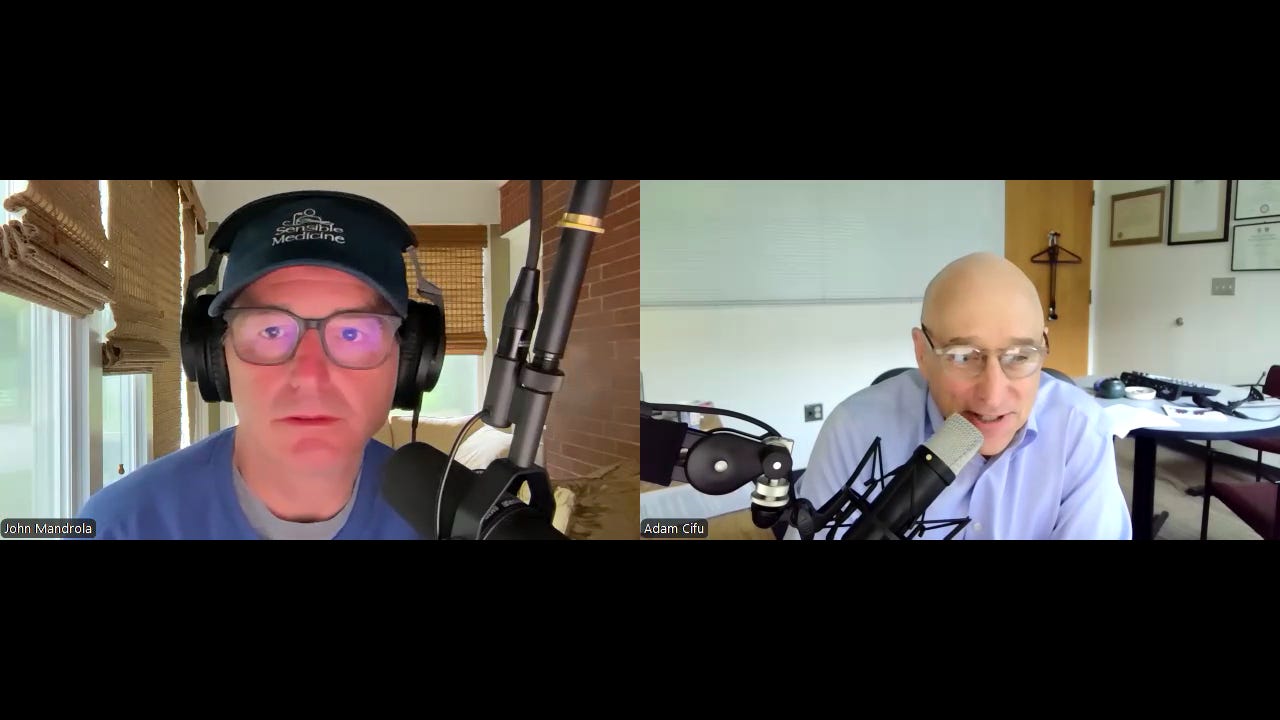
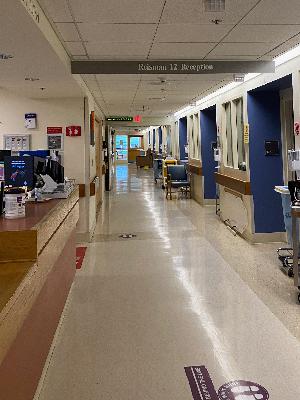
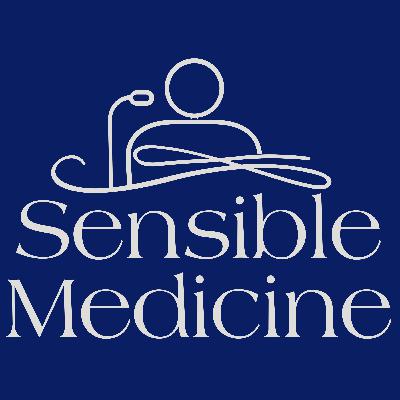
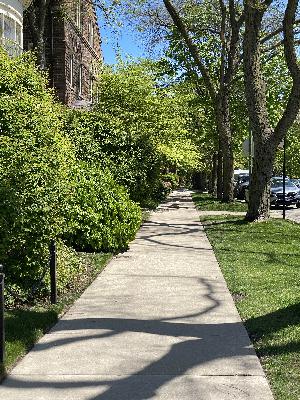

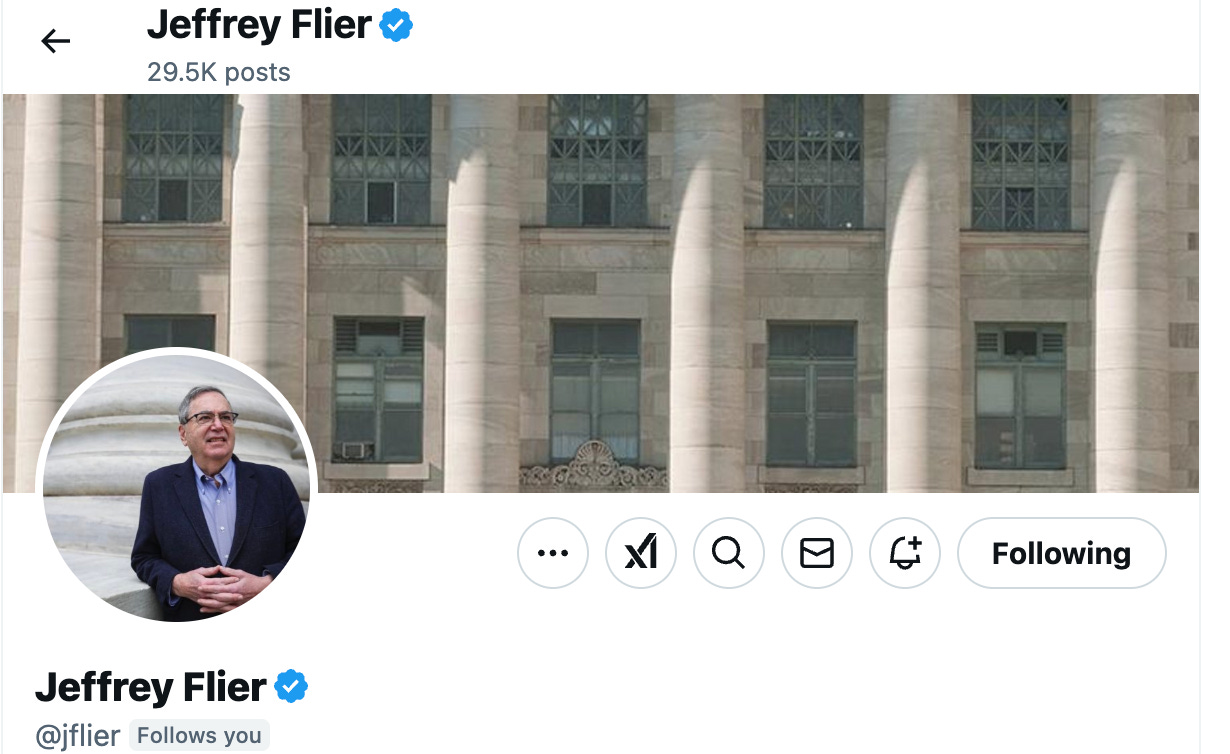




VP - I love hearing your raw emotions and glad you didn't bleep it out! Keep up the good fight! P.S. I'm still recovering ~90% from my first bout of covid about 2 weeks back as a very healthy 50yo Caucasian. I was coerced into getting the first and only booster for me in late 2021 and have no plans to get any more shots without data!